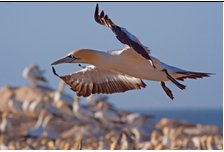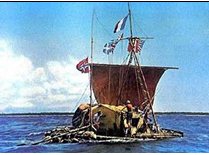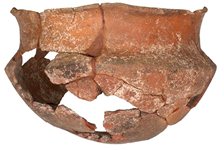The great migration
Peopling PolynesiaOvers thousands of years, people from South-east Asia spread out across the Pacific Ocean to reach the far corners of what became known as Polynesia. Was it due to famine? Had they been driven out because of war? We will never know the reasons for every voyage but we can suggest a few motives. Their waka (canoes) were well built for long journeys as this from wide-girth trees. They also needed plenty of supplies on board, not just for the voyage, but for starting a new life on a different island. But how did the Polynesians find land in the vast Pacific Ocean? Was it pure luck or had these early explorers honed a set of skills that enabled them to navigate without a map? The technique of carefully studying wave patterns was common among Polynesians. This was just one element of nature used by navigators. Others included:
Birds would fly offshore to catch fish and then return to their land-based nests. Obviously they could see land a lot further ahead than humans. So navigators simply followed them. Navigators were also able to return home if they could not find land.
Like many ancient peoples, the Polynesians left no written records. So how do we know when they travelled and in what order the islands were settled? Is there any evidence that helps us to answer these questions? |
The theoriesEarly European explorers like James Cook noted similarities in the language used on different islands thus establishing a link between Pacific peoples. Then a more modern explorer, Norwegian Thor Heyerdahl sailed from Peru to Polynesia largely by ocean currents, suggesting South America was the Polynesian homeland. However little evidence supports his theory apart from the use of sweet potatoes in both areas.
Since the Kon-Tiki voyage, hundreds of archaeological sites containing Lapita pottery have been found. With carbon-dating, we can map a trail of evidence across the Pacific as the ‘Lapita’ people (the original Polynesians) migrated from South-east Asia. DNA analysis of the first peoples in communities as far from Asia as Easter Island confirms it as the ancient home of the Polynesian’s ancestors. Archaeological digs in recent years suggest regular trade between islands separated by thousands of kilometres of open ocean. This indicates that there was nothing accidental about their travels.
|




